—Meet Nature’s Greatest Rebels—
Watch now with the PBS Video App!
From a promiscuous prairie dog to a kleptomaniac crab and an alpha chimpanzee who reigns with an iron fist, this three-part series introduces the most rebellious animals in the natural world.
But are these creatures really misbehaving?
Across the world new studies are uncovering an astonishing variety of rebellious animal behaviors, and despite how it appears on the surface, researchers are discovering the complex and fascinating science behind why these animals behave the way they do.
In fact, being a rebel could be the key to success in the wild.
EPISODE GUIDE:
“Hunger Wars” encore Thursday, Sept. 2 at 7 p.m. on KPBS 2 - Meet the animals who will steal, cheat and fight to get food, including kleptomaniac crabs, thieving macaques, con artist spiders, tricky tigers and cannibalistic lizards.
Noteworthy Facts:
- Coconut crabs weigh up to nine pounds and may be the world’s largest land crab. More than one million coconut crabs reside on Christmas Island, where they are known to locals as “robber crabs” for stealing anything they can get their claws on in a competition for food.
- Deer, the main prey of the tiger, are dichromats, which means their color vision comes from just two color receptors – they can only see greens and blues. This makes it harder to spot the orange stripes of tigers who wish to prey on them.
- Hummingbirds have to eat more than twice their body weight in food each day. Most hummingbirds get their food from the nectar of surrounding flowers in exchange for pollination. The Wedge-bill cheats this process by going straight to the base of the flower, opting out of pollination, but gaining the nectar. Scientists call this “floral larceny.”

Buzzworthy Moments:
- A jumping spider in the rainforest of Queensland must pass through an army of ants to feed on a nest full of delicious larvae. Feeding on ant larvae from birth gives the spider the ants’ chemical code and an identical smell so it can pass through the nest undetected.
- In Madagascar, chimpanzee families compete for the fruit of a fig tree. The groups must fight each other for rights to the territory: loud calls announce the start of battle, which escalates into a frenzied situation aimed to terrorize and intimidate. After a violent skirmish, one group emerges victorious.
- On a remote and barren island off the coast of Naxos, Greece, wall lizards resort to eating their own kind to not starve. Some even catch and swallow their victims whole.
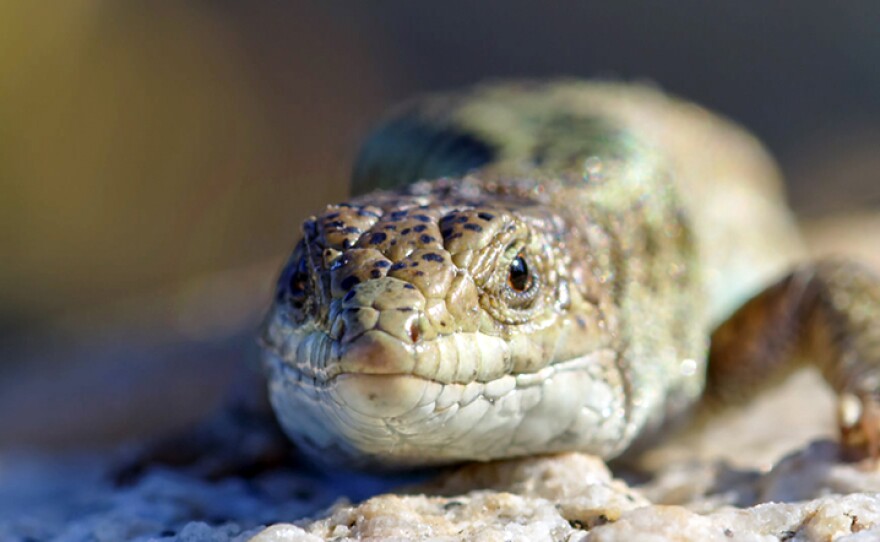
Featured Species:
- Coconut crabs
- American pikas
- Rhesus macaques
- Tigers
- Jumping spiders
- Pygmy falcons
- Wedge-billed hummingbirds
- Mouse lemurs
- Chimpanzees
- Aegean wall lizards
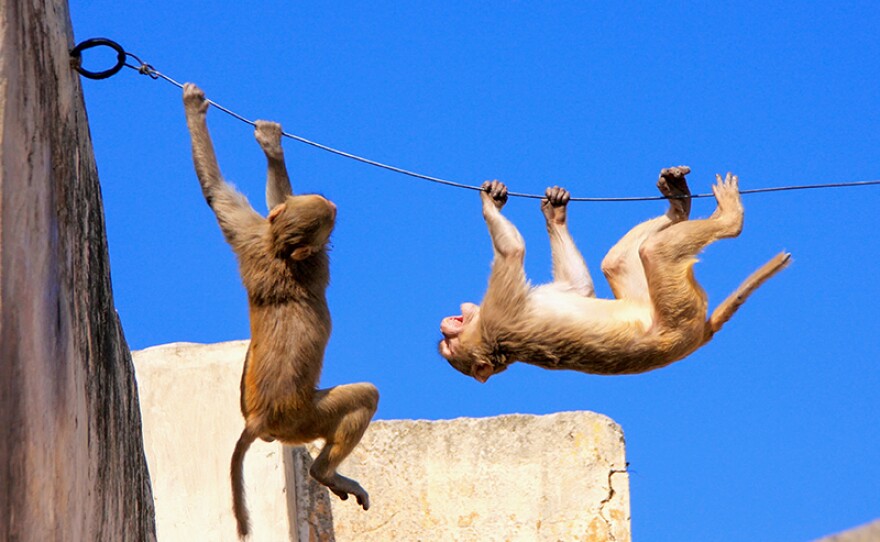
“Survival” encore Thursday, Sept. 9 at 7 p.m. on KPBS 2 - Some animals will do whatever it takes to survive. Cockatoos turn to vandalism, boxer crabs hold anemones hostage, sloths become filthy, puff adders have an ‘invisibility cloak’ to hide themselves, and chimps use violence to stay in power.
Noteworthy Facts:
- Sulphur-crested cockatoos are notorious for vandalizing and littering Sydney, Australia on garbage day. These inquisitive and clever birds have figured out which colored bins they can find scraps of food in, and this adaptation to the urban environment has made them curious to try to discover other food sources around the city, even if it means damaging property.
- Stone martens have found a new haven in the cities of central Europe and are causing extensive damage to cars; there’s been an estimated $75 million worth of damage per year in Germany alone. Research suggests the destructive behavior is tied to the need to secure a mate through scent-marking of territories. Cars carry the scent marks around the city and confuse the Stone martens into thinking their territory is being encroached upon.
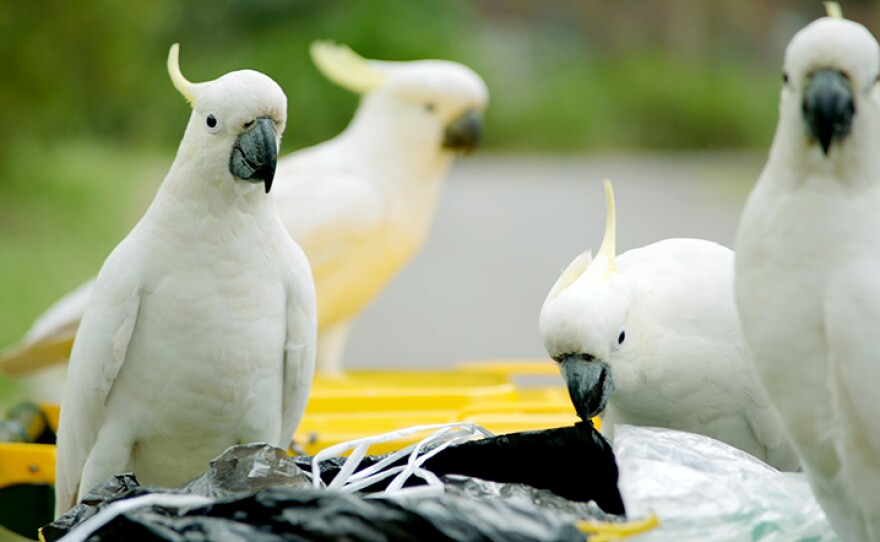
Buzzworthy Moments:
- Boxer crabs carry glove-like sea anemones full of toxins in order to defend themselves. One courageous boxer crab fights off a pufferfish, throwing a punch with a powerful sting.
- In the rainforests of Central America, algae grows on a three-toed sloth’s fur, acting as camouflage against predators. The algae needs nutrients to flourish, which it gets from hundreds of moths also stuck in sloth fur. Once a week, the sloth makes a perilous journey down to the forest floor to go to the bathroom and replenish its moth collection.
- The Striated caracaras, birds of prey, on the Falkland Islands carve out territory to feast on the eggs and chicks of the island’s vast seabird colonies. In order to get past the adults guarding the food, the adolescent falcons form a gang in order to overpower their elders.
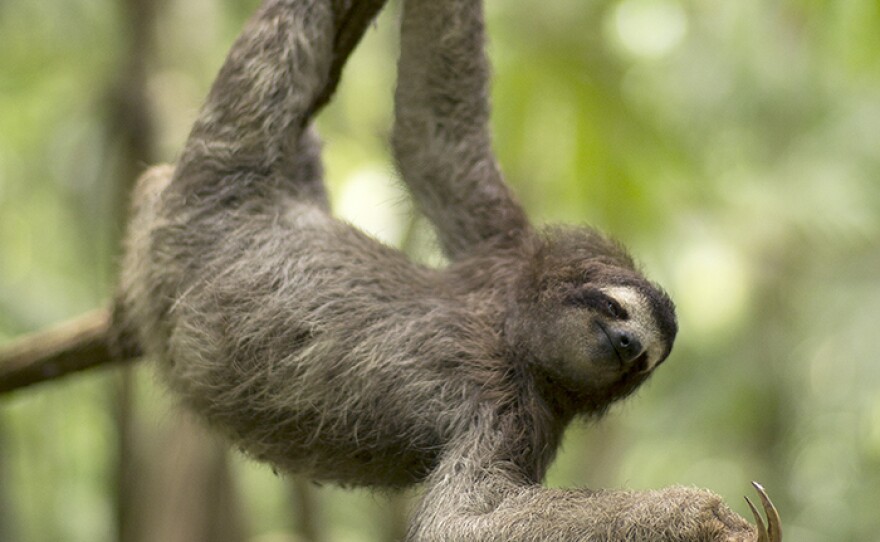
Featured Species:
- Sulphur-crested cockatoos
- Stone martens
- Boxer crabs
- Three-toed sloths
- Puff adders
- Hermit crabs
- Striated caracaras
- Chimpanzees
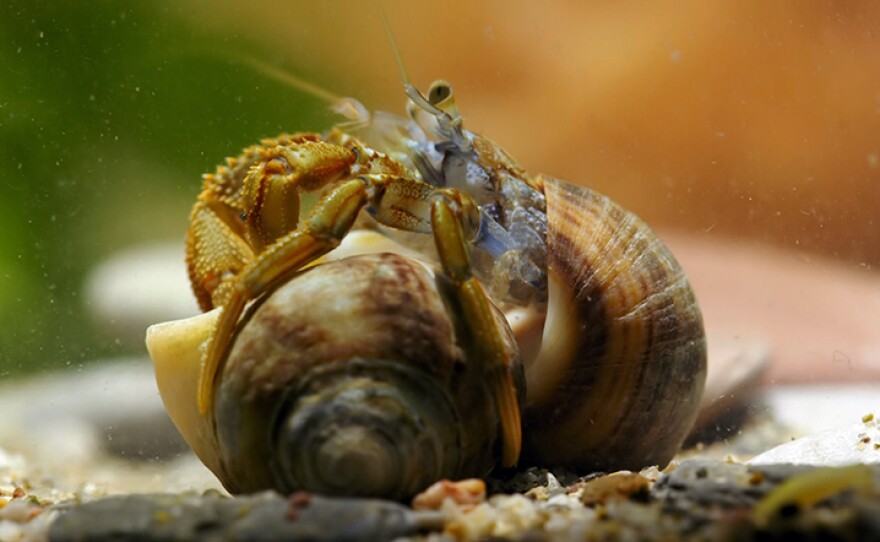
“The Mating Game” Thursday, Sept. 16 at 7 p.m. on KPBS 2 - Getting ahead in the mating game requires some astonishing behavior — from promiscuous prairie dogs, to backstabbing manakins, kidnapping macaques, and hyenas with a bad case of sibling rivalry.
Noteworthy Facts:
- Female Gunnison’s prairie dogs are only receptive to mating for about six hours a year. If they don’t successfully mate during this window, they lose their chance until next year. In order to maximize this time and ensure pregnancy, two-thirds of female prairie dogs take more than one partner.
- In Uganda, Banded mongoose packs are so tight-knit that the females tend to mate with their male relatives, resulting in a high proportion of inbred pups. When males and females from different groups wish to get together, they must incite a riot between the clans as a distraction.
- Spotted hyenas are often born as twins, and shortly after birth the siblings fight to establish a hierarchy in their clan, which can include more than 100 hyenas. If food is in short supply, the dominant pup will push the subordinate pup away from their mother’s milk. In nearly 10 percent of hyena litters in the Serengeti, the subordinate dies of starvation.
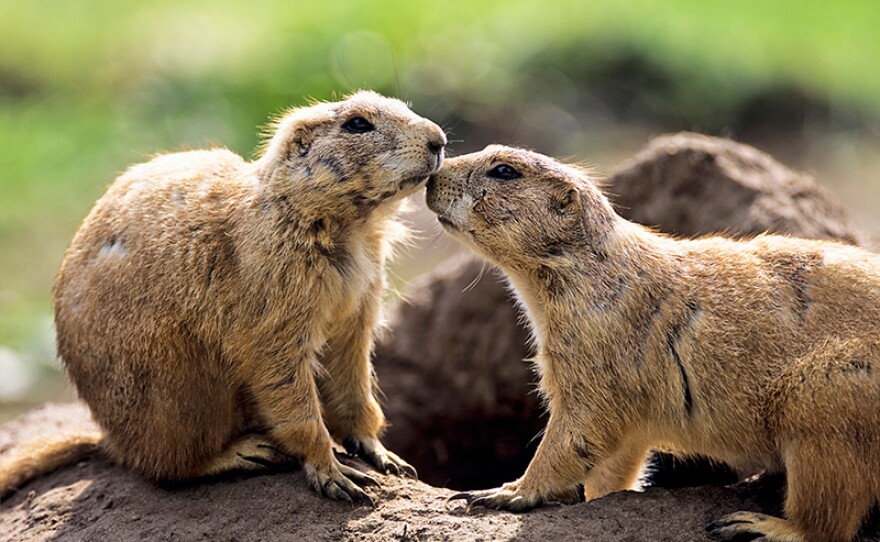
Buzzworthy Moments:
- Female burrowing bees wait out the winter underground, and early in the mating season, the waiting males outnumber the females hundreds to one. In an intense sequence, multiple male bees descend on a female as soon as she pops out from the burrow, wrestling their rivals for dominance. This results in a colony littered with dead bees, and occasionally the female becomes an unwitting victim as well.
- Male long-tailed manakins attract a mate by partnering up with another male for a complex dance number. Some duos may dance together for up to 10 years, but only the alpha male gets to score with the female they attract.
- A female praying mantis lures a mate by pulsating her abdomen in order to release pheromones. A successful mating session ends in death for her partner – eating him improves her fertility by up to 40 percent.
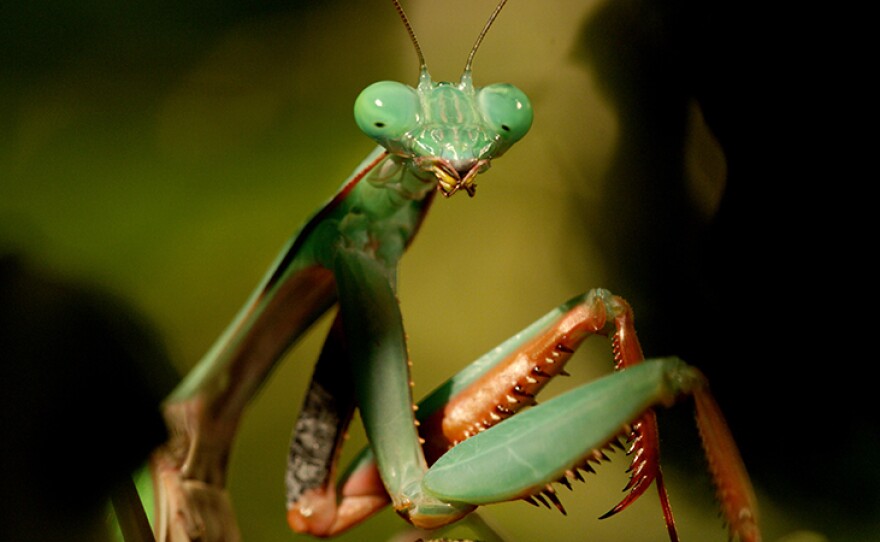
Featured Species:
- Gunnison’s prairie dogs
- Praying mantis
- Banded mongooses
- Dawson’s burrowing bees
- Peacocks
- Long-tailed manakins
- Spotted hyenas
- Barbary macaques
Watch On Your Schedule:
With the PBS Video App, you can stream your favorite and local station shows. Download it for free on your favorite device. The app allows you to catch up on recent episodes and discover award-winning shows.
Episodes are available on demand for a limited time after each broadcast. Extend your viewing window with KPBS Passport, a benefit for members supporting KPBS at $60 or more yearly, using your computer, smartphone, tablet, Roku, AppleTV, Amazon Fire or Chromecast. Learn how to activate your benefit now.
Join The Conversation:
NATURE is on Facebook, Tumblr and you can follow @PBSNature on Twitter. #NaturePBS
Credits:
NATURE is a production of THIRTEEN PRODUCTIONS LLC for WNET and PBS. For NATURE, Fred Kaufman is executive producer. Bill Murphy is series producer. NATURAL BORN REBELS is a co-production of THIRTEEN PRODUCTIONS LLC and BBC Studios in association with WNET. For BBC, Jo Shinner is executive producer, Holly Spearing is series producer, and Abigail Priddle and Lucinda Axelsson are commissioning editors. The miniseries is narrated by Allan Peck.





